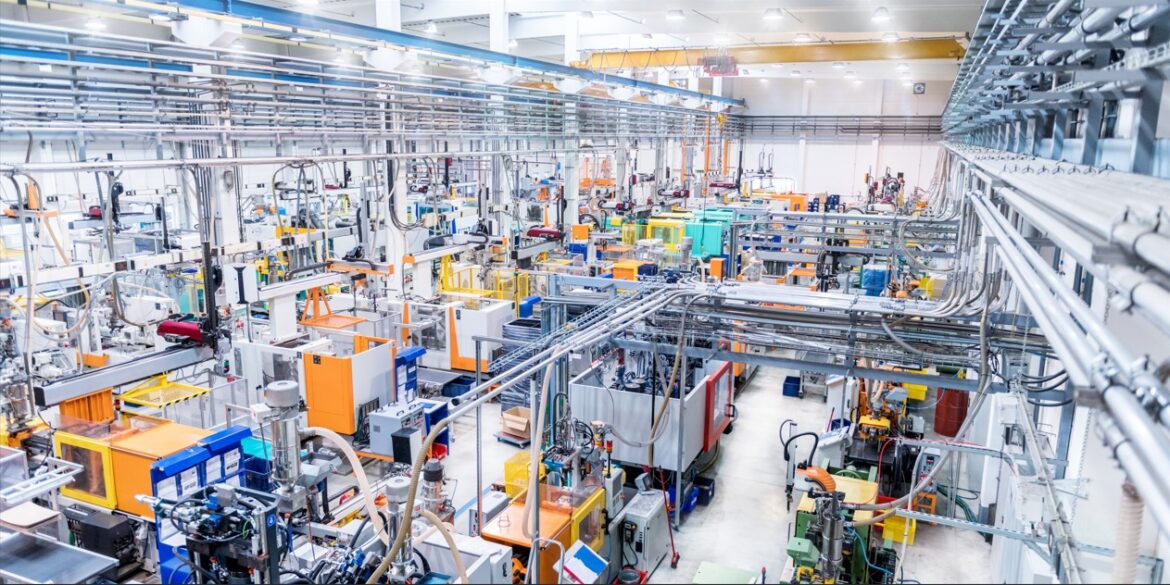The U.S. manufacturing sector contracted for the fifth straight month in August, deepening concerns about the broader economy as key indicators—new orders, production, and employment—continued to decline. The latest data from the Institute for Supply Management (ISM) shows ongoing weakness in the sector, fueling fears that the slowdown could have wider economic implications.
Persistent Contraction in Manufacturing
According to ISM’s latest report, the Manufacturing Purchasing Managers’ Index (PMI) registered at 47.8, remaining below the 50-point threshold that separates expansion from contraction. The continued slump suggests that manufacturing weakness is becoming more entrenched, raising concerns that it could spill over into other parts of the economy.
Declining Orders and Production Signal Weak Demand
A key factor behind the downturn is the sustained decline in new orders, which fell for the sixth consecutive month as both domestic and global demand weakened. High interest rates, rising costs, and economic uncertainty have led many companies to scale back purchases, further dampening industrial activity.
Production levels have also declined sharply, with ISM’s production index reaching its lowest level since early 2023. Manufacturers across various industries, including automotive, aerospace, and consumer goods, are cutting output to align with reduced demand.
“This isn’t just a temporary slowdown,” said Mark Zandi, chief economist at Moody’s Analytics. “The drop in new orders suggests that businesses are pulling back in a way that could persist for months.”
Job Losses Mount as Hiring Slows
The downturn is also impacting the labor market, with ISM’s employment index slipping further into contraction territory. After grappling with worker shortages in recent years, manufacturers are now facing the opposite problem—slack demand is prompting layoffs and hiring freezes.
Several major companies in the auto, aerospace, and machinery sectors have already announced workforce reductions in response to weakening conditions.
“This is the longest period of manufacturing contraction since the early days of the pandemic,” said Nancy Vanden Houten, lead U.S. economist at Oxford Economics. “If the trend continues, we could see an acceleration in job losses.”
Broader Economic Implications
The prolonged weakness in manufacturing is raising concerns about the overall health of the U.S. economy. While consumer spending has remained relatively strong, higher borrowing costs, inflationary pressures, and slowing global trade are beginning to take a toll.
Manufacturing accounts for nearly 11% of U.S. GDP, and its struggles could ripple through related sectors such as transportation, retail, and logistics.
The Federal Reserve’s aggressive interest rate hikes—aimed at curbing inflation—have played a role in the slowdown by making borrowing more expensive for businesses. If the manufacturing sector does not stabilize soon, economists warn that the U.S. could move closer to a recession.
Can Manufacturing Rebound?
The outlook for manufacturing remains uncertain, with recovery prospects dependent on interest rate policy, global economic conditions, and business investment. Some analysts believe that if inflation continues to ease, the Federal Reserve may consider rate cuts in 2025, which could help stimulate industrial activity.
However, for now, manufacturers remain cautious, focusing on cost-cutting measures, production adjustments, and a conservative hiring approach. Until demand rebounds and economic uncertainty subsides, manufacturing is likely to remain under pressure—along with concerns about a broader economic slowdown.


